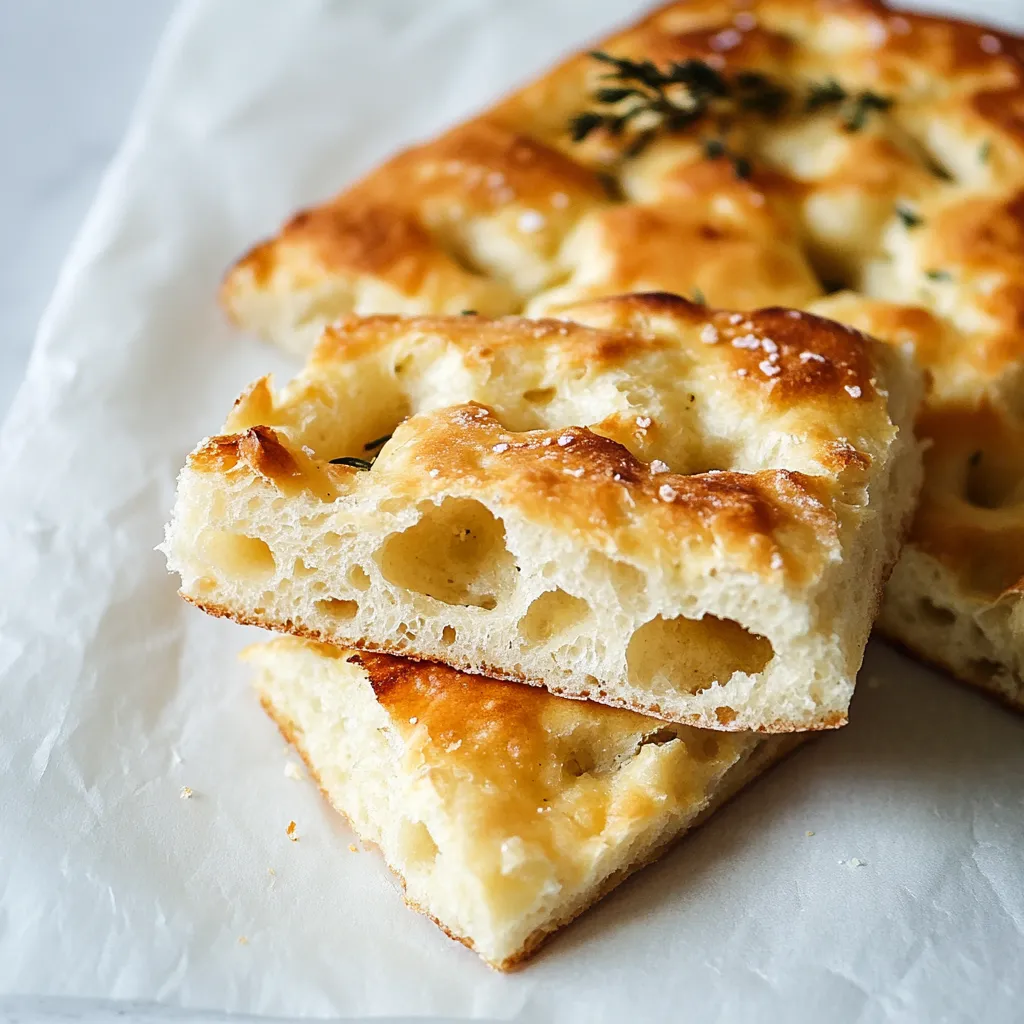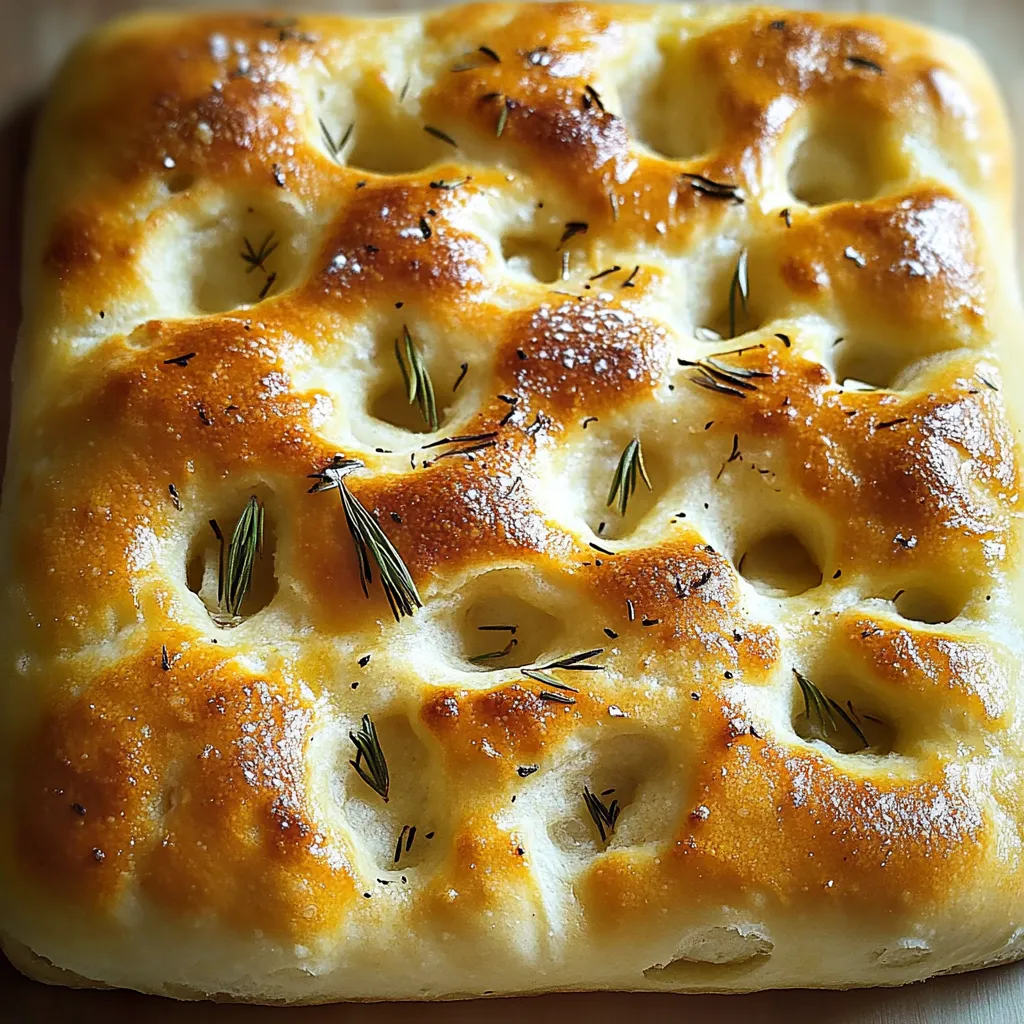 Pin it
Pin it
Walking into a kitchen filled with the scent of freshly baked focaccia takes me back to wandering through small Italian towns. This simple bread, known for its poked surface and beautiful brown exterior, has become what I make whenever family comes over. It never stays on the table long once it comes out hot.
I've tried making this bread dozens of times, and I've found that letting it rise slowly is the trick to getting those air bubbles everyone loves. These days my neighbors show up like clockwork when they smell it baking.
Key Ingredients Breakdown
- Bread Flour: Go for unbleached bread flour to get that nice chew. It's got more protein which helps create those bubbles we want
- Extra Virgin Olive Oil: Don't be cheap here - you'll taste the difference in every mouthful
- Active Dry Yeast: Keep it in the fridge in something airtight so it stays fresh longer
- Sea Salt: The chunky kind adds taste and that nice crunch on the top
- Fresh Rosemary: Look for bright, strongly scented sprigs without any dark spots
Proper Cooking Process
- Step 1: Making Your Dough (25 minutes):
- Get your yeast going in water that's just warm enough. Mix your flour and salt separately, then make a hole in the middle. Pour your oil in first, then add the bubbly yeast water. Mix gently so flour doesn't go everywhere. Keep kneading until the dough feels as soft as your earlobe.
- Step 2: First Rise Session (1-2 hours):
- Coat your bowl with plenty of oil - it'll soak into the dough while rising. Cover with a wet dish towel instead of plastic. Put it in your oven with just the light turned on for perfect warmth. The dough's ready when it's twice as big and full of air bubbles.
- Step 3: Stretching and Poking (15 minutes):
- Pour enough oil on your baking pan to make it shine. Slowly stretch the dough like you're smoothing out sheets, letting it rest when it gets stubborn. Make deep finger pokes all over, almost touching the pan. Let the dough puff back up a bit between pokes.
- Step 4: Second Rise and Cooking (45 minutes):
- The holes will start filling in as it rises again. Pour oil generously into each little dent. Throw salt from up high so it lands evenly. Bake until the whole thing looks like it's been dipped in honey.
 Pin it
Pin it
When I was little, my Italian grandma always said good focaccia should have "golden pools" - those oil-filled dents that make every bite amazing.
Flavor Combinations
Adding some herbs, small tomatoes, and olives turns this from bread into dinner. In the hot months, I love putting thin slices of lemon and fresh rosemary on top.
Plan-Ahead Options
You can let your dough sit in the fridge overnight for even better flavor. Just give it time to warm up before you start shaping it.
Ways To Enjoy It
Instead of using a knife, just pull pieces off with your hands - those uneven chunks are perfect for soaking up oil or sauce.
Keeping It Fresh
For leftovers, wrap them in a cloth towel first, then put that in a paper bag. This keeps the outside crispy while the middle stays soft.
 Pin it
Pin it
After baking focaccia for so long, I've learned you can't rush it. This might look like a basic recipe, but it's all the small things - how you drizzle the oil or make the dimples - that turn basic stuff into something amazing. Every time I bake it, I see why people have loved this simple bread for hundreds of years.
Frequently Asked Questions
- → Can I use all-purpose flour instead of bread flour?
- Absolutely, regular all-purpose flour works well, though bread flour will give you a bit more chew in the final product.
- → How do I know when the dough has risen enough?
- You'll notice the dough has roughly doubled in bulk during the first rising period, typically taking 1-2 hours somewhere warm.
- → Can I add different toppings?
- For sure! Try adding halved cherry tomatoes, sliced olives, or sweet onions alongside or instead of the rosemary.
- → Why do we dimple the dough?
- Those finger pokes create the classic focaccia look and let tiny pools of oil form across the top.
- → How should I store leftover focaccia?
- Pop it in an airtight container at room temp for up to 2 days, or wrap and freeze it for about a month.
